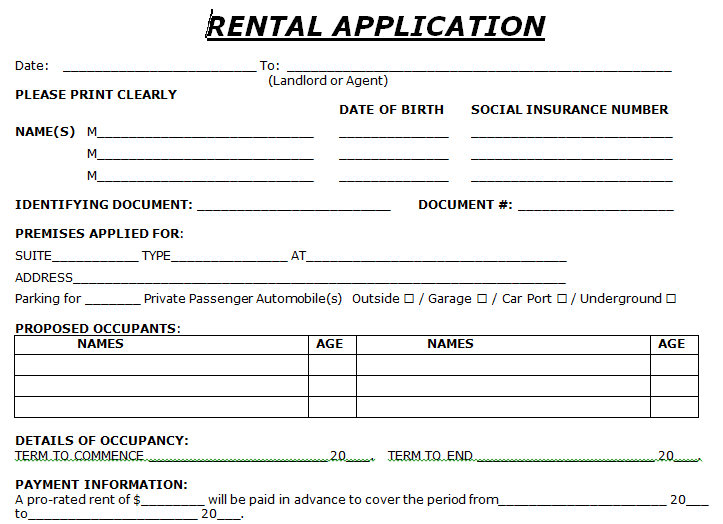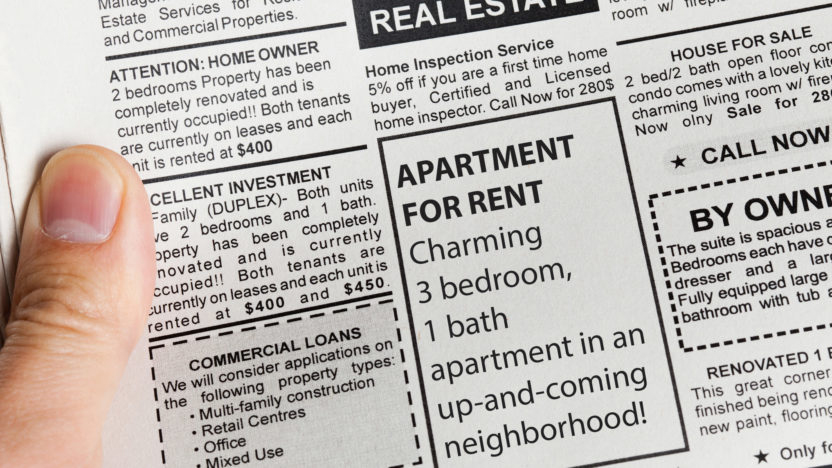July 15th 2019
We’ve talked in the past couple of issues about screening prospective tenants and avoiding the ‘Tenant from  Hell’. Let’s look more specifically at the process you go through when you are selecting a tenant for one of your units. Specifically the paperwork.
Hell’. Let’s look more specifically at the process you go through when you are selecting a tenant for one of your units. Specifically the paperwork.
There are two distinct documents that you are going to want to use. The first is a ‘Rental Application’ form. This document when used properly is the source of vital information you will need when deciding who to rent your property to.
The first step generally is to advertise the unit which you wish to rent. You may use Kijiji, or some form of newspaper ad. There are lots of options. I like to have prepared a number of Rental Application forms partially completed with property address, rent, who pays for what, and so on.
 At the showing of the unit, I give each prospective tenant a copy of the Rental Application form, ask them to complete it and return it to me if they are interested. The form I use has some information that is really not that important such as personal references (everybody knows somebody that will vouch for them), so it isn’t really all that helpful) or make and model of car. But it has a number of areas that are vitally important:
At the showing of the unit, I give each prospective tenant a copy of the Rental Application form, ask them to complete it and return it to me if they are interested. The form I use has some information that is really not that important such as personal references (everybody knows somebody that will vouch for them), so it isn’t really all that helpful) or make and model of car. But it has a number of areas that are vitally important:

Collect the applications. Go over them carefully. Do your homework. Then select the best one. And if none of them really appeal to you, wait until you get one that does. Don’t settle for someone you have reservations about. And, as a suggestion, don’t contact a tenant and tell them you have turned them down for some reasons. If you must, let them know you haven’t made a final decision until you have. Once you’ve found a successful candidate, then if an applicant calls, tell them you have rented the unit.
Sit down with the successful candidate and complete the Rental Application, start and end date (I generally run the initial term for one year, then let it go month to month). Deposit received. Landlord acceptance signature.
 Up until recently, at this point you would be done. There is nothing binding by receiving a Rental Application. But once you have signed acceptance, received a deposit and given your new tenant a copy of the signed Rental Application, it is binding on both parties. Unless you chose to, there was no need to enter into a formal lease.
Up until recently, at this point you would be done. There is nothing binding by receiving a Rental Application. But once you have signed acceptance, received a deposit and given your new tenant a copy of the signed Rental Application, it is binding on both parties. Unless you chose to, there was no need to enter into a formal lease.
But that has changed.
As of April 30th, 2018 all tenancies must use the Government sanctioned Residential Tenancy Agreement. This is a 14 page document but it is not as onerous as it seems. When you go through the Agreement you will see that it contains pretty much the same information you have already stated and agreed to on your Rental Application form. In fact, what I find practical is to carry forward the information from the Application Form onto the Residential Tenancy Agreement and have it prepared and ready when the applicant comes in with his deposit to receive his accepted paperwork.
The first 8 pages of the Agreement contain the terms and conditions of the lease, the last 6 pages are general information outlining rights and obligations with the lease and the Residential Tenancies Act. The form is to be completed up front and the new tenant must be given his copy within 21 days of signing.
I have included a copy of the Rental Application form and a link to the Residential Tenancy Agreement for your convenience.
* Download Rental Application
* Link to Residential Tenancy Agreement
Wayne Quirk, Author
“THE MONEY MACHINE”
wayneq@remax-gc.com